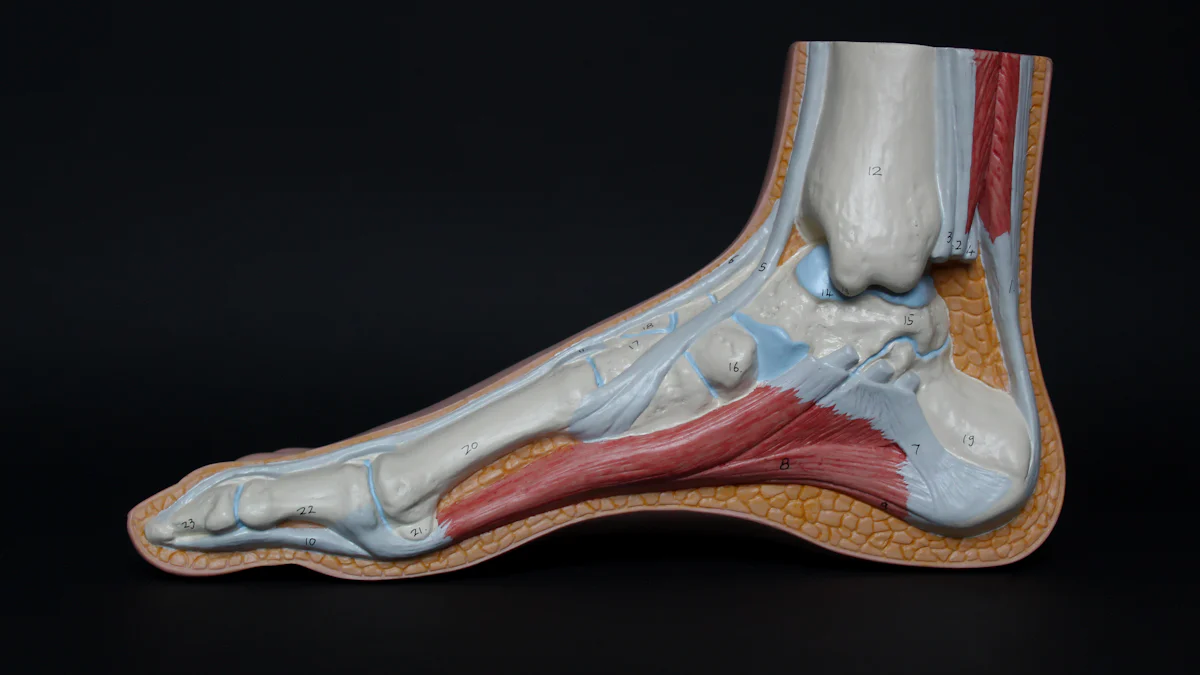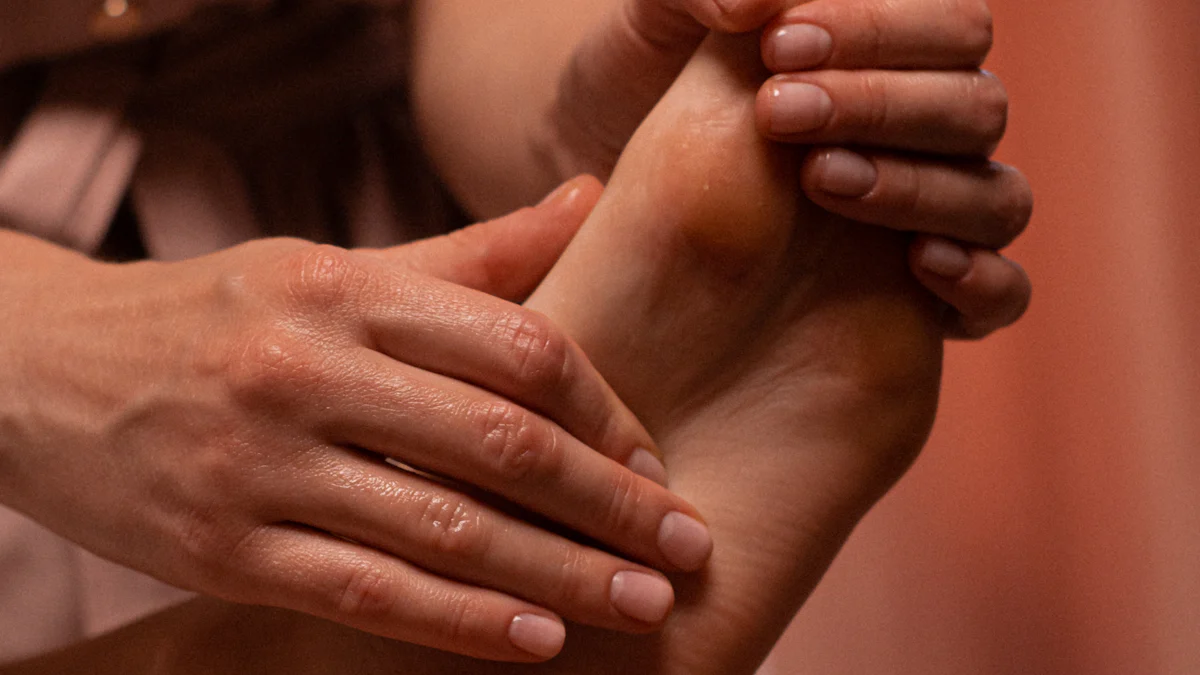Lymphedema in Feet affects many individuals worldwide. Alton, a small town, is no exception. Swelling in the feet can cause discomfort and limit mobility. Understanding the causes and care for this condition is crucial. Alton residents often experience symptoms like tightness and heaviness. These symptoms impact daily activities. Proper care can prevent complications. Alton's healthcare providers emphasize early diagnosis. This approach ensures effective management. Alton encourages community awareness. This helps in reducing the stigma associated with Lymphedema in Feet. Alton's commitment to education fosters better health outcomes. Alton remains dedicated to supporting those affected.
Understanding Lymphedema in Feet
Definition and Overview
What is Lymphedema?
Lymphedema causes swelling due to fluid buildup in tissues. The lymphatic system usually drains this fluid. Blockages disrupt this process, leading to swelling. Lymphedema often affects arms and legs. Feet can also experience this condition. Swelling in feet results from fluid accumulation. This condition impacts daily activities.
How it Affects the Feet
Lymphedema in the feet leads to discomfort and mobility issues. Swelling makes walking difficult. The condition can cause tightness and heaviness. Skin changes may occur over time. Thickening and discoloration of the skin are common. Untreated lymphedema can lead to complications. These include infections and tissue damage.
The Lymphatic System
Role in the Body
The lymphatic system maintains fluid balance. It removes waste and toxins from tissues. The system supports immune function. Lymph nodes filter harmful substances. The lymphatic system plays a crucial role in health. Proper function prevents fluid buildup.
How Blockages Occur
Blockages in the lymphatic system cause lymphedema. Trauma or surgery can damage lymph vessels. Cancer treatments may affect lymph nodes. Infections can also lead to blockages. Genetic factors sometimes play a role. Blockages prevent fluid drainage. This leads to swelling and discomfort. Early diagnosis helps manage symptoms effectively.
Causes of Lymphedema in the Feet
Primary Causes
Genetic Factors
Genetic factors play a significant role in primary lymphedema. Mutations in genes involved in lymphatic system development often cause this condition. People with these genetic mutations are born with abnormalities in their lymphatic system. These abnormalities lead to fluid buildup in the feet, causing swelling and discomfort. Understanding genetic causes helps in early diagnosis and management.
Developmental Abnormalities
Developmental abnormalities contribute to primary lymphedema. These abnormalities occur when the lymphatic system does not form correctly during fetal development. The British Lymphology Society emphasizes the importance of recognizing these developmental issues early. Early intervention can prevent severe complications. Proper care and monitoring can improve quality of life for those affected.
Secondary Causes
Surgery and Radiation
Surgery and radiation are common secondary causes of lymphedema. Procedures that involve lymph node removal or damage can disrupt lymphatic flow. Cancer treatments, such as radiation therapy, often affect the lymphatic system. Swelling in the feet may result from these disruptions. Healthcare providers recommend regular monitoring after surgery or radiation to detect early signs of lymphedema.
Infections and Injuries
Infections and injuries can trigger lymphedema in the feet. Conditions like Lyme disease and chronic venous insufficiency may lead to lymphatic blockages. Trauma to the lymphatic system can also result in swelling. Ankle Oedema and Lymphoedema often occur together in such cases. Prompt treatment of infections and careful management of injuries are crucial. Preventing further complications requires diligent care and attention.
Symptoms of Lymphedema in Feet

Recognizing Symptoms
Swelling and Discomfort
Lymphedema in feet often presents with noticeable swelling. This swelling results from fluid accumulation in the tissues. Swelling can lead to significant discomfort. You might experience a feeling of tightness around the affected area. Walking or standing for long periods becomes challenging. The Australasian Lymphology Association website highlights that early recognition of swelling is crucial. Early detection allows for timely intervention. Ankle Oedema frequently accompanies lymphedema, exacerbating discomfort.
Skin Changes
Skin changes serve as another indicator of lymphedema. Thickening and hardening of the skin occur over time. Discoloration might also develop. These changes signify progression of the condition. The Australasian Lymphology Association website emphasizes monitoring these symptoms. Regular observation helps in identifying worsening conditions. Proper skin care can prevent complications. Protecting the skin from injuries and infections remains vital.
Diagnostic Procedures
Medical History and Examination
A thorough medical history forms the foundation of diagnosis. Your healthcare provider will inquire about past illnesses or trauma. Cancer treatments or recent life changes also play a role. A physical examination follows the history review. The Australasian Lymphology Association website suggests focusing on swelling and skin changes. Healthcare providers assess the severity of symptoms. This assessment guides further diagnostic steps.
Imaging Tests
Imaging tests assist in confirming a lymphedema diagnosis. Common tests include MRI and lymphoscintigraphy. These tests visualize the lymphatic system. Imaging helps identify blockages or abnormalities. The Australasian Lymphology Association website notes that no specific test exists for lymphedema. Medical history and examination remain primary diagnostic tools. Imaging supports these findings, providing a comprehensive view. Accurate diagnosis ensures effective treatment planning.
Treatment for Lymphedema in Feet

Non-Surgical Treatments
Compression Therapy
Compression therapy plays a vital role in managing lymphedema in the feet. Compression garments like stockings or sleeves apply pressure to the affected area. This pressure helps move lymph fluid back into circulation, reducing swelling. Compression wraps can also assist in this process. These wraps work alongside light exercise and manual lymphatic drainage. Proper fitting of these garments is crucial. A professional should fit them to ensure the right amount of pressure. Incorrectly fitted garments may worsen the condition. Regular use of compression therapy can prevent complications such as cellulitis.
Manual Lymph Drainage
Manual lymph drainage (MLD) is another effective treatment. This technique involves gentle massage to stimulate lymph flow. A certified therapist usually performs MLD. The massage encourages fluid movement from the tissues into circulation. Regular sessions of MLD can significantly reduce swelling. Patients often find relief from discomfort after these sessions. MLD also supports other treatments like compression therapy. Combining these methods enhances overall effectiveness. Consistent application of MLD improves mobility and quality of life.
Surgical Interventions
Lymphatic Bypass Surgery
Lymphatic bypass surgery offers a solution for severe cases. Surgeons create new pathways for lymph fluid to drain. This procedure alleviates blockages in the lymphatic system. Patients often experience reduced swelling post-surgery. The surgery aims to restore normal lymphatic function. Recovery involves monitoring and follow-up care. Healthcare providers guide patients through post-operative care. This guidance ensures optimal recovery and long-term benefits. Surgical intervention may not suit everyone. Consultation with a specialist helps determine suitability.
Liposuction
Liposuction serves as an option for advanced lymphedema. Surgeons remove excess tissue and fat from the affected area. This removal reduces the volume of the swollen limb. Liposuction can improve mobility and comfort. The procedure requires careful consideration and planning. Patients must adhere to post-operative instructions. Compression garments are essential after liposuction. These garments help maintain results and prevent recurrence. Liposuction offers significant improvement for many patients. Discussing options with a healthcare provider is crucial.
Preventive Measures and Care
Lifestyle Adjustments
Exercise and Diet
Exercise plays a crucial role in managing lymphedema in the feet. Gentle exercises promote fluid drainage and improve circulation. Activities like walking or swimming help maintain mobility. Regular movement keeps the lymphatic system active. Elevating the feet during rest periods reduces swelling. Proper diet supports overall health. A balanced diet rich in fruits and vegetables boosts the immune system. Hydration remains essential for maintaining fluid balance.
Skin Care and Hygiene
Proper skin care prevents complications associated with lymphedema. Keeping the skin clean reduces the risk of infections. Moisturizing daily maintains skin elasticity and prevents cracking. Protecting the skin from injuries minimizes the chance of bacterial entry. Trimming nails carefully avoids accidental cuts. Avoiding extreme temperatures protects the skin from damage. Wearing sunscreen shields the skin from harmful UV rays.
Monitoring and Follow-up
Regular Check-ups
Regular check-ups with healthcare providers ensure effective management of lymphedema. Routine visits help monitor the condition's progression. Healthcare professionals assess swelling and skin changes. Early detection of complications allows for timely intervention. Medical evaluations guide treatment adjustments. Consistent follow-up appointments support long-term health.
Self-Monitoring Techniques
Self-monitoring empowers individuals to manage lymphedema effectively. Observing changes in swelling provides valuable insights. Measuring the circumference of the feet tracks progress. Noting any discomfort or skin changes aids in early detection. Practicing self-care techniques enhances overall well-being. Engaging in manual lymphatic drainage encourages fluid movement. Wearing compression garments consistently supports lymphatic function.
Understanding the causes and care of lymphedema in feet is crucial. Early detection allows for prompt treatment initiation. Monitoring the body and measuring affected areas can help in early detection. Proactive management is key to treating and managing lymphedema. Preventive measures such as avoiding certain activities and maintaining skin health can reduce the risk of infections. The American Cancer Society emphasizes the importance of education in managing lymphedema. Cancer Australia provides resources for those affected. The Cancer Council offers support and guidance. Visit the Cancer Council Australia website for more information.



Share:
Lymphedema Uncovered: Symptoms and Solutions
The Best Way To Relieve Edema In Your Legs And Feet Fast